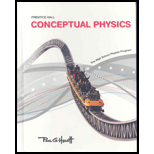
Concept explainers
What are the steps of the scientific method?
To discuss: The steps of the scientific method.
Explanation of Solution
Introduction:
Scientific method is very essential for the progress of scientific theories that explains the particular questions on the natural world in a scientific manner. The procedure followed in observing, raising questions, and finding answers through experiments is not necessarily distinctive for any one field of science. There is no particular way to list the steps involved in scientific method. Most of the times it depends on the question or the problem to be answered and the field of science. Usually scientific method is put through in a linear way, but once the conclusion part is reached it may often get large number of questions and it may follow cyclic manner to conclude the results.
The most probable steps involved in scientific method are:
- Observation − This is the first step followed in scientific method. This involves careful observation on something to be investigated.
- Question − Once the observation is made, the questions to be formed that must tell about the things to be determine or achieve in the experiment. Thus the question must be as precise as possible.
- Hypothesis − Making a hypothesis is the most significant part in the scientific method. It must contains the purpose of the experiment, details about the variables used, and the expected results of the experiment to be performed.
- Experiment − After making a hypothesis, it is necessary to write a procedure that should clearly tell about the experiment.
- Results − The results obtained from the experiments should be reported in this section.
- Conclusion − This is the final step involved in the scientific method. The results obtained in the experiment should be concluded in this section. Whether the experiment supports the hypothesis or not should be clearly mentioned here.
Chapter 1 Solutions
Conceptual Physics: The High School Physics Program
Additional Science Textbook Solutions
Conceptual Physical Science (6th Edition)
Physics (5th Edition)
Life in the Universe (4th Edition)
University Physics (14th Edition)
Introduction to Electrodynamics
Lecture- Tutorials for Introductory Astronomy
 College PhysicsPhysicsISBN:9781305952300Author:Raymond A. Serway, Chris VuillePublisher:Cengage Learning
College PhysicsPhysicsISBN:9781305952300Author:Raymond A. Serway, Chris VuillePublisher:Cengage Learning University Physics (14th Edition)PhysicsISBN:9780133969290Author:Hugh D. Young, Roger A. FreedmanPublisher:PEARSON
University Physics (14th Edition)PhysicsISBN:9780133969290Author:Hugh D. Young, Roger A. FreedmanPublisher:PEARSON Introduction To Quantum MechanicsPhysicsISBN:9781107189638Author:Griffiths, David J., Schroeter, Darrell F.Publisher:Cambridge University Press
Introduction To Quantum MechanicsPhysicsISBN:9781107189638Author:Griffiths, David J., Schroeter, Darrell F.Publisher:Cambridge University Press Physics for Scientists and EngineersPhysicsISBN:9781337553278Author:Raymond A. Serway, John W. JewettPublisher:Cengage Learning
Physics for Scientists and EngineersPhysicsISBN:9781337553278Author:Raymond A. Serway, John W. JewettPublisher:Cengage Learning Lecture- Tutorials for Introductory AstronomyPhysicsISBN:9780321820464Author:Edward E. Prather, Tim P. Slater, Jeff P. Adams, Gina BrissendenPublisher:Addison-Wesley
Lecture- Tutorials for Introductory AstronomyPhysicsISBN:9780321820464Author:Edward E. Prather, Tim P. Slater, Jeff P. Adams, Gina BrissendenPublisher:Addison-Wesley College Physics: A Strategic Approach (4th Editio...PhysicsISBN:9780134609034Author:Randall D. Knight (Professor Emeritus), Brian Jones, Stuart FieldPublisher:PEARSON
College Physics: A Strategic Approach (4th Editio...PhysicsISBN:9780134609034Author:Randall D. Knight (Professor Emeritus), Brian Jones, Stuart FieldPublisher:PEARSON





